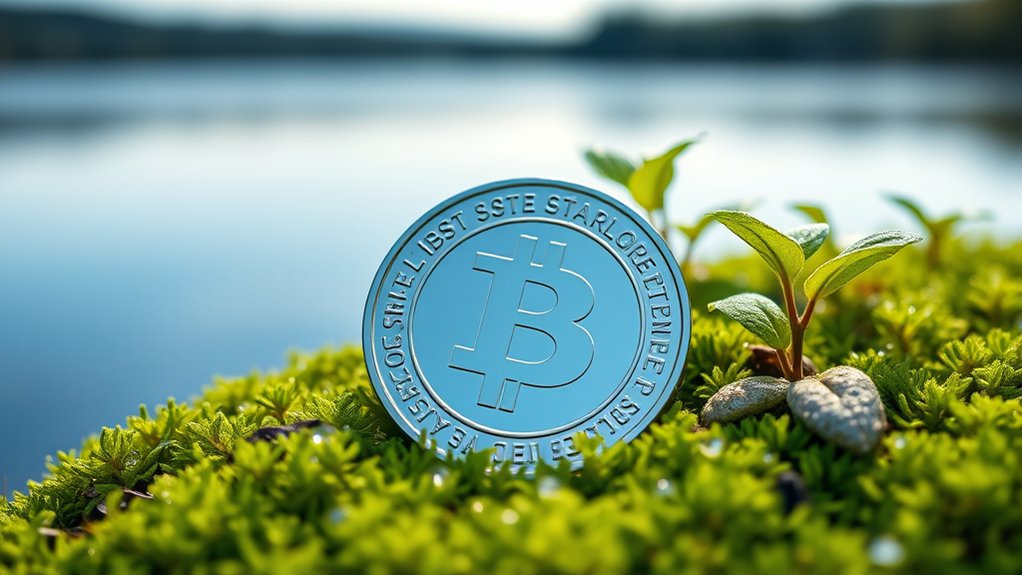A stablecoin is a digital currency that aims to hold a steady value, usually tied to something reliable, like a dollar. It wants to avoid the wild price swings typical of traditional cryptocurrencies—because who needs that kind of headache? Some are backed by cash, others by commodities, and some just use fancy algorithms. They’re gaining traction in e-commerce and finance, but there are still trust and regulatory dramas lurking. Want to know how they’re shaking up the money world?

In a world where cryptocurrencies can swing wildly from riches to rags in a matter of hours, stablecoins waltz in like the calm after a storm. These digital coins are the sensible cousins of the crypto family. Unlike their volatile relatives, stablecoins are pegged to stable assets, often fiat currencies like the U.S. dollar or euro. Their mission? To keep things chill. No wild price swings here. Just predictable, stable values.
Imagine wanting to buy something online without worrying whether your money will lose half its value overnight. That’s the beauty of stablecoins. They act like digital versions of traditional cash, making them practical for everyday transactions. Backed by reserves, stablecoins often give holders the option to redeem them for the underlying asset. So, if you’re feeling bold, you can cash out without a hitch. Fiat-collateralized stablecoins are commonly backed by reserves held at financial institutions, adding a layer of security for users. In fact, stablecoins are designed to provide price stability that traditional cryptocurrencies often lack, making them a safer choice for transactions. Additionally, stablecoins have gained popularity in the cryptocurrency market due to their unique ability to facilitate trading and DeFi activities.
Stablecoins bring peace of mind to online shopping, ensuring your funds remain steady and redeemable when needed.
These coins come in different flavors. There are fiat-collateralized stablecoins, commodity-backed versions, and even algorithmic stablecoins that rely on fancy math instead of actual cash. Yes, you heard that right. Some of them are just algorithms trying to keep their cool. And if that sounds risky, well, it is.
But stablecoins aren’t just about keeping your wallet intact. They’ve found their way into decentralized finance (DeFi), making a splash in liquidity provision and cross-border payments. They’re even being used in e-commerce. Talk about a modern-day hero.
Yet, it’s not all sunshine and rainbows. Regulatory issues loom large, and trust issues? They’re as real as the next crypto scandal waiting to unfold. And let’s not forget the occasional market hiccup.
Despite these challenges, stablecoins are paving the way for mainstream acceptance of digital currencies. They’re driving innovation and helping bridge the gap between traditional finance and the wild world of crypto. Welcome to the future—where stability meets chaos.
Frequently Asked Questions
How Are Stablecoins Different From Traditional Cryptocurrencies?
Stablecoins are like the chill cousin of cryptocurrencies. While cryptos like Bitcoin can swing wildly, stablecoins keep it cool by pegging their value to stable assets, like the US dollar.
No one wants their money to go on a rollercoaster, right? They’re designed for smoother transactions and less drama.
But don’t be fooled—stablecoins have their own risks. They might seem stable, but the market can be a wild beast, too.
Can Stablecoins Be Used for International Transactions?
Sure, stablecoins can absolutely be used for international transactions.
They’re like the chill cousin of cryptocurrencies, not freakishly volatile. Speed? Check. Cost? Way cheaper than those old-school bank wires. They’re predictable, unlike your ex’s mood swings.
Plus, they’re getting the nod from big players like the G20. But hey, don’t forget—regulations are lurking around the corner.
Still, for quick and stable cash transfers, stablecoins are pretty much a game-changer.
What Are the Risks Associated With Using Stablecoins?
Using stablecoins? Sure, they sound great, but risks lurk everywhere.
Market fluctuations can throw values off. Mismanaged reserves? Recipe for disaster.
And let’s not forget cyber threats—because who doesn’t love hackers?
Payment issues pop up too; good luck getting your money when things crash.
Plus, with no central authority, governance is like herding cats.
All that shiny promise might hide a minefield of chaos. Proceed with caution, folks!
How Do Stablecoins Maintain Their Price Stability?
Stablecoins maintain price stability through a mix of clever tricks. They use arbitrage—basically, buy low, sell high—to balance prices.
Some are backed by good ol’ fiat cash or commodities. Others rely on algorithms to tweak supply like a DJ mixing tracks.
Regular audits keep things legit, while smart contracts handle adjustments.
But, let’s be real: stability is a moving target, and sometimes, even the best-laid plans go awry.
Are Stablecoins Regulated by Government Authorities?
Regulation of stablecoins? It’s a real mess.
Multiple U.S. agencies are in the mix, each with their own opinions. The SEC and CFTC? They can’t even agree on what a cryptocurrency is.
States, like Texas, have their own rules, which just adds more chaos. Compliance? Good luck with that!
And with proposed legislation like the STABLE Act floating around, who knows what the future holds.
It’s a regulatory circus. Buckle up!





